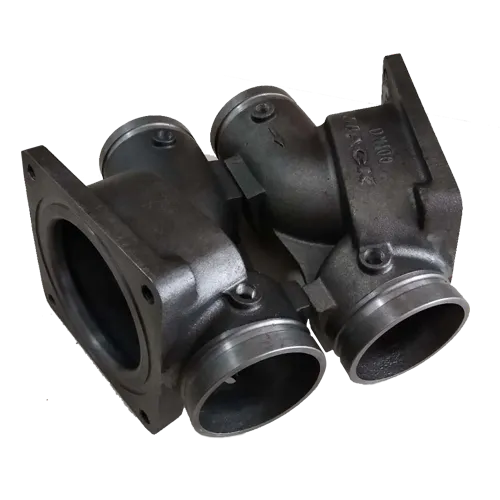Mobile:+86-311-808-126-83
Email:info@ydcastings.com
English
Cast Iron Valve Box Cover | Heavy-Duty, Corrosion-Resistant
Cast Iron Valve Box Cover — practical notes from the field
If you maintain water or gas networks, you already know: access hardware can make or break response times. The humble, often-overlooked Cast Iron Valve Box Cover takes a beating from traffic, weather, and crews. Lately I’ve been hearing the same thing from city buyers—“just give us covers that don’t wobble, don’t seize, and don’t blow our budget.” Fair ask.

What’s trending
- Shift from gray iron to ductile (nodular) iron for higher impact resistance.
- Preference for EN 124/D400-class load ratings on arterial roads, even when B125 would “do.”
- Factory-applied epoxy or bitumen coatings to stretch service life in de-icing salt zones.
- More OEM customization—logos, QR-coded traceability, and tamper-resistant fits.
Quick specs (typical)
| Item | Spec (≈ real-world) |
|---|---|
| Material | Ductile iron GGG40 / ISO 1083 (≈ ASTM A536 65-45-12) |
| Weight window | 10–20 kg (cover or cover+frame sets vary) |
| Process | Sand casting (green sand), CNC finish machining |
| Coating | Bitumen or epoxy 80–200 μm DFT (ISO 12944 guidance) |
| Load class | EN 124 B125–D400 (site-dependent) |
| Tensile (tested) | ≈ 420–460 MPa; HBW ≈ 150–190 (sample data) |

Process flow (how the good ones are made)
Materials: certified ductile iron charge; nodularization with Mg treatment; inoculation for graphite control. Methods: pattern making → green-sand molding → melt → nodularize → pour → shakeout → shot blast → gate removal → CNC finishing → coating. Testing: spectrometer chemistry, tensile bars (ISO 1083 / ASTM A536), hardness (HBW), dimensional checks, and proof-load per EN 124 for the assembled unit. Typical service life? 25–40 years, honestly depends on traffic, bedding, and drainage.
Applications and advantages
- Municipal water/gas valve boxes, industrial campuses, irrigation grids, fire protection loops.
- Advantages: ductile iron toughness, stable fit, replaceable gaskets, and anti-rattle seat designs.
- Many customers say quieter lids reduce complaints in night traffic—small but real win.

Vendor snapshot (what to look for)
| Vendor | Pros | Watch-outs |
|---|---|---|
| OEM foundry (e.g., YD Castings, Hebei, China) | Tooling control, ISO 9001, custom logos, consistent metallurgy | MOQ ≈ 200–500 sets; sea lead time 25–45 days |
| Trader/reseller | Lower MOQ, broader catalog | Traceability gaps; mixed batches |
| Local fabricator | Fast response, on-site fixes | Limited EN 124 certification; price volatility |
Customization and fit
Common tweaks: embossing city logos, seat geometry to match legacy valve boxes, anti-rotation keys, and gasketed lids. I guess the best advice: send CAD plus a marked-up legacy sample. Real-world tolerances matter more than pretty drawings.
Case note: urban retrofit
A Midwestern utility swapped 1,200 units to a new Cast Iron Valve Box Cover pattern—D400-rated, epoxy-coated. Field tests showed 250 kN proof load with no permanent set; tensile coupons averaged 445 MPa; hardness ~170 HBW. After 12 months, rattle-related callouts dropped by ≈ 60%. Not bad.

Factory note: Origin—No.563 Xinhua Road, Shijiazhuang City, Hebei Province, P.R. China. 050051. Certifications typically include ISO 9001; some plants add ISO 14001/45001. Ask for mill certs and EN 124 type tests with batch traceability. And yes, the same foundries often produce valve bodies alongside every Cast Iron Valve Box Cover you step over downtown.
Standards to cite in RFQs
- Material: ISO 1083 (GGG40) or ASTM A536 equivalents.
- Load/fit: EN 124-2 class B125/D400 as applicable; AWWA C111/C153 interfaces in North America.
- Coating: ISO 12944 guidance for corrosivity category and DFT.
Citations
- ISO 1083:2018—Spheroidal graphite cast irons.
- ASTM A536—Standard Spec for Ductile Iron Castings.
- EN 124-2:2015—Gully tops and manhole tops for vehicular and pedestrian areas.
- AWWA C111/C153—Rubber-gasket joints and ductile-iron compact fittings (interface guidance).
- ISO 12944—Paints and varnishes—Corrosion protection of steel structures (coating reference).
-
Materials Used in Manufacturing Cap End Pipe FittingsNewsNov.24,2025
-
Material Properties of CF8M CastingNewsNov.24,2025
-
How to Inspect Pump Cap Ends for DamageNewsNov.21,2025
-
Backward Curved Impeller – Efficient Airflow Solutions for Industry | YD CastingsNewsNov.21,2025
-
Automobile Water Pump - Efficient, Quiet, Durable & ElectricNewsNov.21,2025
-
Impeller for Pumps – High-Efficiency, Durable, OEM-ReadyNewsNov.21,2025











